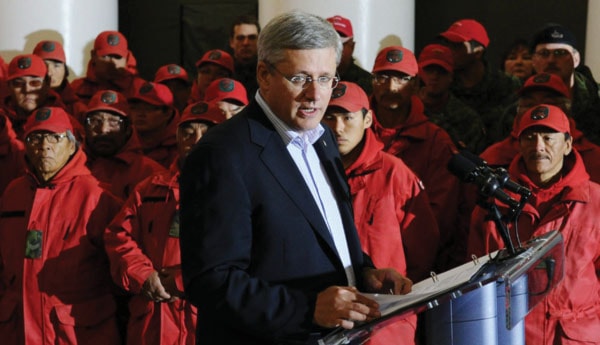RESOLUTE, Nunavut — A simulated major air crash was only hours away when word came to soldiers, coast guard personnel and RCMP that they were faced with the real thing in remote Resolute.
Saturday’s deadly crash of a chartered Boeing 737 barely a kilometre from the High Arctic hamlet’s windswept airport came smack in the middle of the largest Arctic military exercise ever conducted by the Canadian Forces.
The final phase of Operation Nanook was to designed to simulate a mid-air collision between a small bush plane and cargo plane, the “signature piece” of the three-week exercise, according to a government official. The Canadian Forces had even positioned the wreckage of a long-ago crash on a plateau above the village of 250 people.
Officers were sitting down to lunch in the mess on Saturday when someone burst in to report a jetliner was down.
Lt. Cmdr. Albert Wong, the senior public affairs officer for Op Nanook, said he sat for a brief moment in stunned disbelief.
“Someone said, ‘No duff’ — which is military code for, this is real,” Wong told reporters who arrived Tuesday with Prime Minister Stephen Harper.
“All of us started running to our posts.”
The crash, which claimed 12 lives but remarkably left three survivors, highlighted both the importance of Canadian rescue capacity to the Far North and the desperate difficulties in handling major disasters in remote regions.
“Along with the first responders from the Resolute Bay community, you came face-to-face with the very danger that you were preparing for,” Harper told a couple of hundred military, coast guard and research community folks assembled in a wind-buffeted army tent.
“You presence here and your quick response saved lives. Amidst this great tragedy, you helped save lives. That can never be forgotten.”
The prime minister delayed and shortened his scheduled visit to Resolute in order not to overburden the tiny village’s already strained infrastructure.
The simulated air disaster drill was cancelled and more than a hundred Canadian Forces members shipped out early to make room for incoming air disaster investigators, coroners and forensics experts.
It was pure chance that the town was so prepared for the crash.
The military had built a full medical and dental field hospital for the exercise and had flown in two fire trucks and their crews on C-17 transports. The three survivors of the crash, including a seven-year-old girl, were first treated at the field hospital while the fire crews doused the burning fuselage.
Had Operation Nanook not been in full swing, “the Canadian Forces response would have hours instead of minutes,” said the official, “but the community response would have been the same.”
While the prime minister stressed the increasing capacity to handle disasters in the Far North, he told reporters it’s simply not feasible to have search-and-rescue capability scattered across the North.
“We have to be realistic,” said Harper. “There is no possible way in the vastness of the Canadian Arctic we could ever have all of the resources necessary close by. It’s just impossible.”
Harper visited an ancient archeological site on the wind-blasted Arctic Ocean shoreline and then sat down with villagers at a community hall in Resolute Bay to discuss the crash. The event was closed to media.
The crash clearly has cast a pall on what is usually one of the more light-hearted weeks of Harper’s annual travel schedule.
“It is with a heavier heart that I commence this year’s trip and my third visit to Resolute Bay,” Harper told the military and research personnel.
As for the locals of Resolute Bay, Harper said “you do not grieve alone.”
